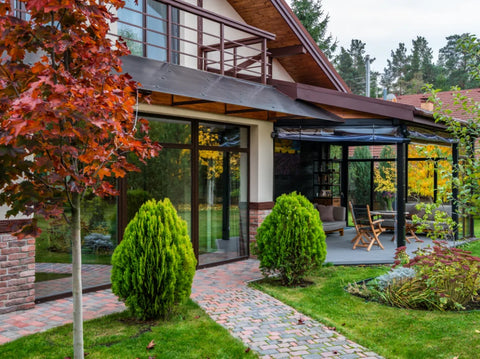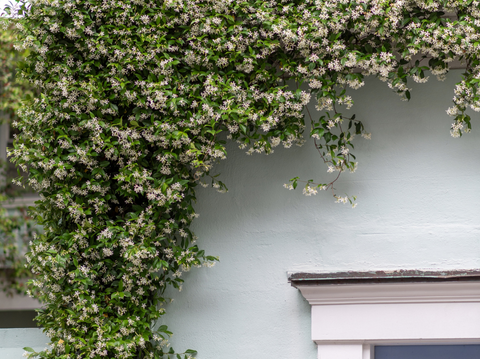When it comes to giving your plants the best start in life, timing is everything. Fall offers the perfect conditions—warm soil, cool air, and often more consistent rainfall—making it the ideal season for establishing strong, healthy root systems before winter. Whether you garden in the north or south, fall planting can help your trees and shrubs flourish for years to come.
Why Fall is the Best Time to Plant Trees and Shrubs
Warm Soil and Cool Air Create Perfect Conditions
By fall, summer heat has warmed the soil, but cooler air temperatures reduce stress on new plants. Roots grow best in soil temperatures above 55°F, which often continue well after the first crisp mornings arrive.
Less Water Stress
Cooler temperatures reduce evaporation, allowing plants to retain more moisture and focus energy on root development rather than survival.
A Head Start for Spring Growth
Roots keep growing until the ground freezes, setting up your plants to leaf out stronger and fuller when spring arrives.
Fewer Pests and Diseases
Many plant pests and diseases slow or disappear in cooler weather, lowering risks for newly planted trees and shrubs.
When to Plant in Fall by USDA Grow Zone
Fall planting works nationwide, but your timing depends on your USDA grow zone. A general rule: plant 4–6 weeks before your area’s first hard freeze.
-
Zones 3–5: Plant in early fall so roots establish before freezing temperatures arrive.
-
Zones 6–9: Enjoy a longer planting season—often into November or December—thanks to milder winters.
-
Zones 10–11: Fall is often the best time to plant, avoiding summer heat and allowing months of root growth before warm weather returns.
Special Note for California, Arizona, Texas, and Florida (Zones 6–9):
These regions benefit from an extended fall planting season, making it possible to plant well into late fall or early winter. This is an excellent time to add evergreens, flowering trees, and shade trees while soil conditions are still favorable.
Best Trees and Shrubs to Plant in Fall
Planting the right species for your region ensures the best results. All of these fall-friendly options are available at Simply Trees:
-
Italian Cypress – Tall, narrow evergreen perfect for privacy screens and Mediterranean-inspired designs.
-
Skyrocket Juniper – Hardy, drought-tolerant evergreen for year-round color and structure.
-
River Birch – Adaptable tree with beautiful peeling bark for winter interest.
-
Red Maple – Brilliant fall foliage and reliable growth across many climates.
Bloodgood Japanese Maple
Coral Bark Japanese Maple
Autumn Blaze Maple -
Limelight Hydrangea – Late-season blooms that transition to soft pinks before winter.
-
Bald Cypress – Great for wetter soils with feathery foliage that turns russet in fall.
-
Autumn Gold Ginkgo – Striking fan-shaped leaves that turn brilliant golden-yellow in fall, offering timeless beauty and exceptional resilience.
How to Plant Trees and Shrubs in Fall
1. Choose the Right Location
Match your plant’s light, soil, and moisture requirements with your landscape conditions.
2. Dig a Proper Hole
Dig 2–3 times as wide as the root ball but no deeper than the root flare.
3. Position and Backfill
Place the plant so the root flare is level with or slightly above the soil surface. Backfill with native soil, breaking up clumps.
4. Water Thoroughly
Water deeply after planting to settle soil and remove air pockets. Continue watering 1–2 inches per week until the ground freezes.
5. Mulch for Moisture Retention
Apply 2–3 inches of mulch around the base, keeping it a few inches away from the trunk.
Aftercare Tips for Fall-Planted Trees
-
Water Until the Ground Freezes – Roots remain active until soil temperatures drop below freezing.
-
Protect in Harsh Winters – In colder zones, wrap young evergreens with burlap or create windbreaks.
-
Deep Soak for Evergreens – Give evergreens a final deep watering before the soil freezes to prevent winter burn.
Frequently Asked Questions About Fall Planting
What are the benefits of planting trees in the fall?
Fall offers warm soil and cool air—perfect for root growth. Plants experience less stress, require less frequent watering, and develop strong root systems before winter.
When should I plant in the fall?
A good rule is to plant 4–6 weeks before your area’s first hard freeze. In warmer climates like California, Texas, and Florida, you can often plant well into late fall or early winter.
Which trees are best to plant in the fall?
Great fall choices include Italian Cypress, Blue Arrow Juniper, River Birch, Red Maple, Limelight Hydrangea, Bald Cypress, and Autumn Gold Ginkgo.
Do I need to water fall-planted trees?
Yes. Even though temperatures are cooler, new plantings still need 1–2 inches of water per week until the ground freezes.
Can I plant evergreens in the fall?
Yes. Evergreens like juniper and cypress establish well in fall, especially in Zones 6–9. In colder zones, plant earlier in the season and provide wind protection to prevent winter burn.
Plant with Confidence
When you plant in fall, you set your landscape up for success next spring. At Simply Trees, every plant is shipped in sturdy, double-walled boxes and backed by our 1-Year Guarantee—so you can plant with confidence, knowing we’re with you from delivery to full bloom.
📌 Shop Fall-Ready Trees & Shrubs
References for Further Reading:
-
The Spruce – The Project Everyone Should Tackle This Fall, According to Chip Gaines
-
University of Florida IFAS – Planting Trees in the Landscape
- The Spruce – The Best Time to Plant Every Tree


